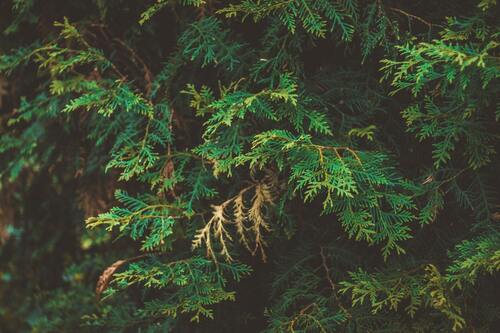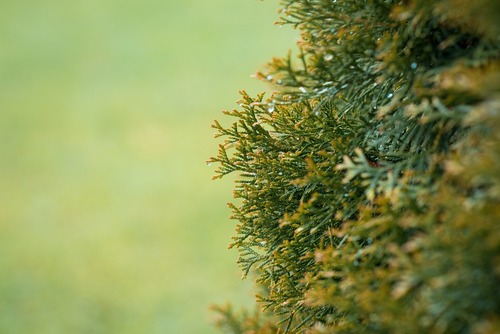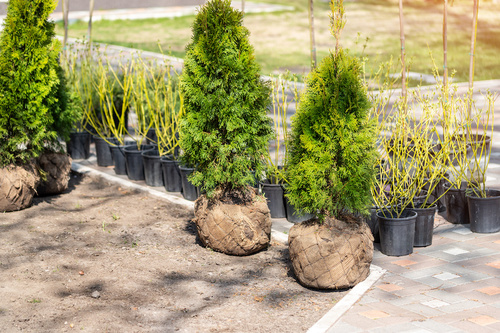Why Your Arborvitae is Turning Brown and How to Fix It
Introduction
Arborvitae is a beautiful tree species often chosen to enhance the aesthetics of your property, serve as a natural barrier, and add charm to your yard. As a member of the evergreen family , this tree is intended to maintain its lush green foliage indefinitely. If, however, you’ve noticed your arborvitae is turning brown, it’s time to investigate why. The good news is that not all cases require removal; the tree might be salvageable depending on the cause and extent of the damage. This comprehensive guide will help you understand why your arborvitae is browning and provide practical solutions to address the issue.
Unraveling the Mystery: Why Is Your Arborvitae Turning Brown?
For plant enthusiasts, witnessing their beloved greens wither away is a nightmare. If you find your arborvitae turning brown, it’s crucial to grasp the underlying causes to effectively combat the issue.
Common Reasons Behind Arborvitae Browning
 Arborvitae Foliage Exhibiting Yellowing and Browning
Arborvitae Foliage Exhibiting Yellowing and Browning
Transplant Shock: The Immediate Aftermath of Relocation
Transplanting an arborvitae isn’t as straightforward as it may seem. These trees are susceptible to transplant shock, especially in the months following relocation. This shift can result in root loss, impacting their ability to absorb nutrients and water. Ensuring the correct planting depth is essential to avoid suffocating the roots. Be sure to educate yourself about proper transplantation procedures to mitigate these shocks.
Drought Stress: The Water Woes
With increasing temperatures, ensuring your arborvitae receives an adequate water supply is critical. Dry spells can lead to severe drought stress for these trees, especially if they are planted in sandy or rocky soils. Remember, mulch can be a lifesaver, and don’t forget the extra water immediately after transplantation.
Winter Injury: The Cold Curse
Harsh winters can be just as detrimental as scorching summers. Freezing temperatures coupled with icy winds can wreak havoc on arborvitae, resulting in leaf and branch damage. As the ground freezes, water uptake becomes restricted, causing the upper parts of the tree to dry up and eventually turn brown.
Root Damage: The Invisible Threat
Exercise caution when performing any digging or trenching activities near your arborvitae. These actions can unintentionally harm the tree’s roots, especially the surface roots responsible for transporting water and nutrients. Disrupting the soil around the tree can spell disaster in the long run.
Disease and Pests: The Unseen Enemies
Certain fungi and boring insects have a particular affinity for arborvitae trees. If your tree exhibits symptoms such as cankers, wilting, holes in the bark, or sawdust accumulations, it’s time to involve a professional. Only a certified arborist can provide a definitive diagnosis and treatment recommendations.
The Road to Recovery: Reviving Your Browning Arborvitae

Green, Healthy Arborvitae Branches and Foliage
If your arborvitae has begun to turn brown, there’s no need to lose hope. Take immediate action with these tips to revive and restore your tree:
Provide Extra Water
During hot, dry periods, offer supplemental watering to reduce drought stress. Use soaker hoses or drip irrigation, such as the HOSS Drip Irrigation System , to deliver water directly to the roots. Water deeply once or twice a week if there’s a shortage of rainfall. Avoid frequent, shallow watering, as it promotes shallow root growth.
Protect from Winter Damage
In colder climates, safeguard your arborvitae from desiccating winter winds by installing burlap screens around the trees. Applying an anti-desiccant sealant before winter hits can help the leaves retain their moisture as well. For smaller trees, consider using insulation to prevent freeze damage to roots and branches.
Improve Soil Health
Focus on improving your soil health to ensure that the roots can access air, water, and nutrients. Apply 2-4 inches of mulch around the base to retain moisture and reduce weed and grass competition. Organic compost can boost soil nutrients and beneficial microbes. Conduct a soil test to evaluate pH and fertility status.
Prune Affected Areas
Prune out any entirely dead or dying branches, trimming back to healthy green wood. Avoid over-pruning the tree since drastic pruning stresses it further. Remove no more than one-third of living branches and foliage per season while the tree recovers.
Fertilize Lightly
Apply a balanced, slow-release organic fertilizer in early spring to provide nutrients without stimulating excessive new growth. Avoid high-nitrogen fertilizers that can harm weakened trees. Consider the use of mycorrhizal fungi to enhance nutrient uptake.
Allow Time to Recover
Lastly, practice patience and allow your arborvitae time to recuperate from stress factors. Meeting the tree’s basic needs for water, nutrients, and care enables it to gradually regain health. It may take several months or even years to replace damaged foliage entirely.
When to Remove a Browning Arborvitae

Three Browning Arborvitae Trees in a Grassy Area
The extent of browning and the duration of decline dictate whether your arborvitae can be saved.
Here are indicators that it may be time to consider removing and replacing browning arborvitae:
- The tree has been declining for more than 2-3 years with no signs of improvement.
- The trunk is brittle or rotting at the base, indicating significant internal damage.
- Irreversible issues like root rot or severe insect infestations are evident.
In some cases, even predominantly brown arborvitae can recover with attentive care. Consult an ISA-certified arborist to assess the tree’s condition before making the final decision to remove it. With early intervention, there’s a good chance of restoring many declining arborvitae trees.
Prevent Arborvitae Browning in the First Place

A Close-Up View of Arborvitae Browning
Preventing arborvitae decline before it begins is key.
Implement these proactive maintenance tips to maintain the health and vibrancy of your trees:
- Select disease-resistant cultivars suitable for your climate zone.
- Plant in well-draining soil rich in organic matter.
- Stake and support newly planted trees to prevent wind damage.
- Water deeply during dry periods, especially immediately after planting.
- Apply mulch and prune correctly to prevent winter injuries.
- Regularly monitor for signs of disease, pests, or other stress factors.
- In spring, apply a light, balanced organic fertilizer.
- Avoid trenching, driving, or digging near the root zone.
With proper site selection, planting techniques, and attentive care, you can prevent many common issues leading to arborvitae browning. Your investment of time and effort will be rewarded with vigorous, verdant trees that enhance the beauty of your landscape for years to come.
Care Tips to Prevent Browning

Burlap Wraps Protecting the Roots of Arborvitae Trees
Wrap Your Tree in Burlap
An excellent method to protect your arborvitae trees in winter is to wrap them in burlap. Burlap is a thick and cost-effective fabric that shields the tree from the sun when it cannot access water. Ideally, perform this task before the ground freezes, securing the burlap in place with twine to protect the tree during periods when water is inaccessible.
Water the Tree When the Ground Is Thawed
If you choose not to wrap your tree in burlap but want to prevent browning, keep an eye on the ground during winter. Water can only penetrate the roots when the soil is thawed and loose. If the ground remains frozen, it may be impossible. Take advantage of warmer winter days when the ground thaws to provide essential hydration to your arborvitae.
How to Save a Browning Arborvitae
Prune Dead Branches
While a brown arborvitae may not fully recover to its former health, it can still be salvaged. Brown branches can rejuvenate, with the sections closest to the trunk returning to their natural green color. This is a positive sign. Schedule pruning services in spring or summer to trim the branches back to where the leaves regain their green color.
Remove Severely Damaged Trees
If a significant portion of your tree has turned brown and shows no signs of improvement after an adequate amount of time has passed, removal may be the best course of action. However, give the tree ample time to demonstrate any potential new growth. In such cases, consult a professional tree removal service like Arborist Now , the premier tree service company in the Greater San Francisco Bay Area. By taking preventative measures in the future, you may avoid the need for tree removal.
Signs Your Arborvitae Is Too Far Gone
Even with the best care, some arborvitae trees may decline to a point where recovery is no longer possible. Here are clear indications that it’s time to remove and replace your arborvitae:
Years of Decline
Arborvitae that have been slowly declining for more than 2-3 years despite corrective care are often too damaged internally to recover. There comes a point where the roots, vascular system, and other structures can’t be repaired.
Brittle, Dead Branches
If more than half the branches are brittle or snap easily, the tree’s vascular system is too damaged to transport water and nutrients. Pruning out the dead material will only further stress the tree.
Rotten Trunk
A soft, punky trunk covered in fungal fruiting structures indicates fungal root rot, a condition that progressively destroys the root system and base of the trunk, ultimately killing the arborvitae.
Severe Pest Damage
Signs such as frass and extensive tunneling from boring insects or cankers oozing sap mean pests have overwhelmed the tree. Even if treated, the damage may be more than the arborvitae can withstand.
Although parting with a beloved tree is challenging, there are situations where removal and replacement are the only viable options. Focus your efforts on maintaining the health of your remaining arborvitae or planting new trees under optimal conditions.
Conclusion
Caring for arborvitae trees requires a combination of proactive measures and timely interventions. Remember, the health of your arborvitae is a testament to your dedication as a gardener. Regular monitoring is essential, and it’s crucial to stay vigilant for signs of disease, pests, or other stress factors . Early intervention is the key to preventing arborvitae decline. Keep an eye out for any unusual changes in your trees, such as wilting leaves, cankers, or insect damage. Swift action can make all the difference in the world.
Keep in mind that even with the best care, some arborvitae trees may reach a point of no return. It’s important to assess the overall health of your arborvitae regularly and make informed decisions based on the indicators we’ve discussed. This might involve the difficult decision to remove and replace your tree, but it’s all in the name of maintaining a vibrant and thriving landscape.
In your journey to care for these magnificent trees, remember that knowledge and patience are your best allies. When in doubt, you can reach out to Arborist Now for expert-level knowledge and care of your arborvitae. By staying informed, acting promptly when necessary, and providing the care they need, your arborvitae trees will continue to grace your property with their timeless beauty for years to come.
Originally posted on August 29, 2023
We may receive affiliate compensation for some of the links below at no cost to you if you decide to make a purchase.


